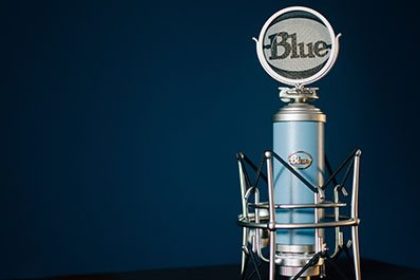
Unless you have a background in audio recording, deciding to the podcast can present challenges you’ve never to face before. Podcasting provides many benefits for your audience and is one of the fastest growing mediums in which they will digest your information. Whether people are commuting, exercising, or just actively listening in their home or office, podcasting provides an easy way to for them to interact with your amazing content.
Let’s begin with the absolute basics and get you podcasting in immediately!
1) Buy a Microphone
We suggest that you purchase a lavalier microphone designed to be used with a smartphone. Check one out here*
Once you buy your microphone, all you need to do is plug it into the headphone jack of your phone and your audio quality will be dramatically enhanced. These microphones are omnidirectional, meaning that you must point them directly to the source of the sound.
If you have more than one person talking in the podcast, then you can buy two, use a splice to keep them in the same audio source, or just record them on two devices and join them together when you edit.
*If you prefer a more upscale product, check out this USB microphone.
2) Create Your Podcast
Find a room that has little outside noise. If you have a window open, close it. If you have the air conditioning on, turn it off. You’ll want as much silence as possible. Any background music or sound effects you want to add can be done when you edit.
Don’t worry about making too many mistakes, as everything will be edited after you complete the podcast. It is best to have an outline of what you are going to talk about, and we advise you don’t have a strict script that you read word for word. Doing so prevents you from coming across as robotic and is more engaging with your audience. Also, don’t focus on being too perfect, as mistakes keep the audience’s attention.
When you speak, point the microphone towards your mouth and keep it about 6 inches away. This will be the clearest sound, and the pops from plosives (“p” sounds) will be minimized.
3) Edit, Edit
After you are finished recording, upload the audio file to your computer and edit it with software. We use the free version of Pro Tools and recommend you do as well. Pro Tools is the audio industry standard.
Editing is an art form and has been discussed extensively. Just make sure you are checking your waveform and that you are not peaking (distorting the audio levels). Using EQ and compression are also beneficial if you want the cleanest sound, but are typically difficult for beginners.
4) Distribute
Once you have a finalized file that has been edited, it is time to get your podcast on all available streaming services. Do this by visiting Blubrry and following the steps to getting it published. You’ll want to make sure you have a great graphic that communicates your brand and that you describe and tag the podcast appropriately to meet the largest audience.
Putting it all together
Now you have learned to how to podcast, edit, and distribute your content. It doesn’t stop there! Use social media to promote your podcast and consider targeting individuals with Facebook, Instagram or Google ads to ensure the right people see your work.
Finally, I’ll leave you with a quote on creativity and take action. Make sure you create a schedule and stick to it!
“Only put off until tomorrow what you are willing to die having left undone” – Pablo Picasso
